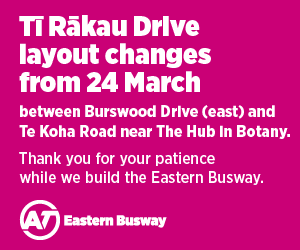
Auckland Council’s governing body has unanimously agreed to lift the region’s remaining outdoor water restrictions following a report from Watercare.
Remaining outdoor water restrictions – which currently prevent the use of sprinklers – but allow hoses fitted with trigger nozzles – will be lifted from Saturday October 23. Restrictions were first put in place on May 16, 2020 in response to a record-breaking drought that saw Auckland’s dam levels drop to 42.5 per cent. On Thursday, capacity was at 93.25 per cent, the highest since early February 2019.
Mayor Phil Goff says dam levels are now above normal which, together with new water supply established over the last 18 months, provides enough certainty that restrictions will not need to be reintroduced in the near future.
“After a record-breaking drought in 2019/20, and a long period of drier than normal conditions, increased rainfall since August has significantly boosted dam storage levels,” he says.
“Current storage is above 93 per cent, up from just 60 per cent in July and slightly higher than the level normal at this time of year. This means we have headroom to lift the remaining water restrictions with little risk that they would need to be re-imposed in the short term.
“Aucklanders have done a fantastic job of reducing their water consumption over the 17 months since restrictions were first introduced – saving more than 20 billion litres.
“We have also developed water-saving habits that, on average, are seeing 36 million litres less water consumed each day than in 2019 (based on the rolling 12-month average). I thank Aucklanders for this and ask them to maintain their water saving habits both to save themselves money and help the environment.”
Alongside Aucklanders’ water-saving efforts, Auckland Council has backed Watercare to increase water supply which, by the first quarter of 2022, will be up to 104 million litres a day higher than the pre-drought period.
“Three new water treatment plants, and network improvements to reduce leakage that are saving an estimated 10 million litres a day, have improved our water supply resilience, and Watercare will continue to invest to ensure that we can both meet increased demand from population growth and to protect against future droughts that may increase with climate change,” Goff says.
Watercare chief executive Jon Lamonte says the outdoor water restrictions, coupled with the Water Is Precious campaign, have served Auckland well.
“As a relative newcomer to Auckland, I’m really impressed with how the city has come together to reduce our collective water use, with huge reductions made from both our commercial and residential customers. Thank you to everyone who has played their part. This, along with our work to reduce leaks in the public network, have formed the demand reduction part of our drought response.
“The other key component of our drought response is our work to increase the amount of water we have available.
“I’d like to thank our staff and contractors for their hard work to build three new treatment plants and upgrade two others, and the suppliers and stakeholders who’ve supported us. With curveballs from Covid-19, it’s been an incredibly busy and challenging time.
“I’d also like to thank our key partners who supported us during the drought. These include our neighbours at Hamilton City Council, who agreed to share their unused water allocation of 25 million litres a day with us last summer – an agreement that is still in place today on an ‘as required’ basis.”
Lamonte says information provided to councillors and the mayor to guide their decision-making included the long-range weather forecast, consumption data and production volumes at our treatment plants.
“At this stage forecasters are predicting slightly wetter-than-normal conditions for summer. Our modelling, based on conservative calculations, gives us confidence that it’s highly unlikely we’ll need to impose further restrictions later in summer,” says Lamonte.
“However, mandatory restrictions will always serve as a tool for managing severe droughts in the future. They’re commonly used around the world during a drought as a way of stretching out the available supply until the rain returns. We’ve only needed restrictions twice in our 29-year history, but at some point in the future we’ll likely need to apply them again.”
Watercare liaison councillor Linda Cooper says, “Water is a precious resource that we rely on every day, so using it mindfully is the right thing to do.
“We’re on the right track, so our message to Aucklanders and businesses is to please keep up the great habits you’ve developed since restrictions were put in place. Since we charge for water and wastewater services based on how much water our customers use, it’s a good way to keep your bills down too.”










